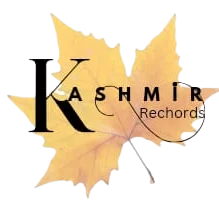(Kashmir Rechords Exclusive Research)
Sir Pandit Tej Bahadur Sapru (8 December 1875 – 20 January 1949) is widely recognized as an Indian freedom fighter, eminent lawyer, and politician. However, very few are aware of his deep connection to his Kashmiri roots, akin to the present-day Kashmiri Pandits dispersed globally following their forced mass exodus from Kashmir in 1990. Despite not speaking Kashmiri, Pandit Tej Bahadur Sapru’s love for his ancestral land was evident. To stay connected with his roots, in 1902, he launched a monthly 50-page bilingual magazine, “Kashmir Darpan,” in Urdu with 10 pages dedicated to Hindi. This magazine became a vital link for Kashmiri Pandits across the subcontinent, helping them stay connected with their homeland and protecting their identity.


Early Life and Education
Born in Aligarh in the United Provinces (now Uttar Pradesh), Sapru hailed from a distinguished Kashmiri Pandit family. He was the only son of Ambika Prasad Sapru and Gaura Sapru (née Hakhu). Interestingly, Sapru was an eighth cousin of Allama Iqbal, the national poet of Pakistan and a key ideologue behind the concept of Pakistan in the 1930s.

Sapru received his education at Agra College and went on to work as a lawyer at the Allahabad High Court, where Purushottam Das Tandon, a future nationalist leader, served as his junior. He later became a dean at Banaras Hindu University. Though admitted to the Middle Temple in London on 13 December 1930, he withdrew on 14 January 1932 without being called to the English bar.
Association with Kashmir Darpan
Sapru’s political career included service in the Legislative Council of the United Provinces (1913–16), the Imperial Legislative Council (1916–20), and as a member for law affairs in the Viceroy’s Council (1920–23). However, his role as Editor of “Kashmir Darpan,” published from Nami Grami Indian Press ,Dara Ganj, Allahabad since 1902, stands out as a testament to his commitment to his community.
Connecting the Kashmiri Diaspora
Recent access to some of editions of “Kashmir Darpan” from 1903 to 1906 by Kashmir Records reveals fascinating insights about the lives of Kashmiri Pandits in areas such as Calcutta, Dhaka, Jodhpur, Hoshiarpur, Lucknow, Varanasi, Allahabad, Jalandhar, Lahore, Sialkot, Amritsar, Srinagar, and Jammu. Managed by Manohar Lal Zutshi, the magazine featured news of births, deaths, marriages, postings, transfers, student results, and other community-specific information, much like today’s Kashmiri-focused magazines, newspapers, and portals. Socio-cultural and political write-ups, besides prose and poetry recitations were also regular feature of this magazine.



Kashmir Darpan’s Notable Contributors
Pandit Tej Bahadur Sapru enlisted renowned scholars, poets, academicians, and writers from across British India to contribute to the magazine. Notable contributors included Brij Narayan Gurtu, Kripa Shanker Koul, Manohar Lal Zutshi, Brij Narayan Chakbast, Dharam Narayan Raina, Triloki Nath Koul, Iqbal Narayan Gurtu, Syed Abdul Majid, Krishan Prasad Kaul, Prasaduman Krishan Kitchloo, Kanhaya Lal Shangloo “Mubarak’’ and Sheikh Abdul Qadir.
The writings in “Kashmir Darpan” emphasized the importance of women’s education among Kashmiris for which he had set up a girls school exclusively for Kashmiri girl students . He was encouraging the community to adopt business ventures rather than solely seeking jobs. The magazine highlighted successful Kashmiri shopkeepers like Pt Dharam Narayan Raina, Razdan Brothers of Amritsar, Saheb Brothers of Munti Bazar Dhaka, Swadeshi Stationery Shop owned by Jeevan Nath Ganjoo, and Ghulam Hussain & Brothers of Karachi. He had encouraged one Pandit Rameshwar Nath Kathju, a Mechanical Engineer to set-up his own venture under the name and style “ Indo-European Trading Company’’ at Brij Mandir, Rawalpindi. This company was famous for dealing with Medicines and Metal work including Boxes and heavy duty locks.

Sustained by Community Contributions
“Kashmir Darpan” was sustained by annual contributions from across the subcontinent, with regular contributors like Nand Lal Tickoo of Karnal, Shyam Lal Chaku of Lucknow, Prithvi Nath Razdan of Jodhpur, Bishember Nath Mushran, Munsiff Kanpur, and Shambu Nath Hakhu of Ajmer. The magazine was also available in leading institutions and libraries of United Province and major cities of British India.



